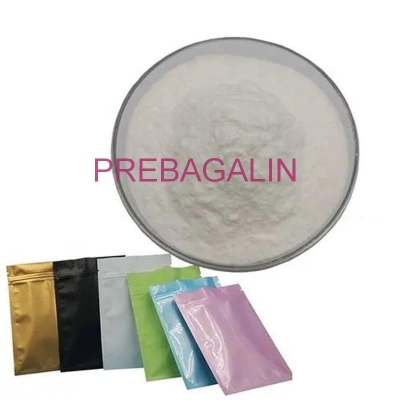-
Categories
-
Pharmaceutical Intermediates
-
Active Pharmaceutical Ingredients
-
Food Additives
- Industrial Coatings
- Agrochemicals
- Dyes and Pigments
- Surfactant
- Flavors and Fragrances
- Chemical Reagents
- Catalyst and Auxiliary
- Natural Products
- Inorganic Chemistry
-
Organic Chemistry
-
Biochemical Engineering
- Analytical Chemistry
- Cosmetic Ingredient
-
Pharmaceutical Intermediates
Promotion
ECHEMI Mall
Wholesale
Weekly Price
Exhibition
News
-
Trade Service
iNature
Radiation-induced brain injury (RIBI) is a serious complication of head and neck tumor after radiotherapy, mostly 3-5 years after the end of radiotherapy, clinical manifestations are cognitive impairment or epilepsy and other symptoms, pathological changes are brain tissue edema, necrosis, etc.
, seriously affecting the quality of life of
patients.
At present, the pathogenesis of radiation brain injury is unclear and the treatment methods are limited, making the clinical prevention and treatment of radiation brain injury one of
the key problems in the field.
On January 5, 2023, Professor Tang Yamei's team from the Brain Science Research Center of Sun Yat-sen Memorial Hospital of Sun Yat-sen University published a report entitled "Microglia drive transient insult-induced brain injury by chemotactic recruitment of CD8+T" on Nelon lymphocytes" research paper elucidates the mechanism by which microglia secrete chemokines CCL2 and CCL8 after radiation attract CD8+ T cells to infiltrate brain tissue and cause brain damage, and propose new intervention strategies
for the treatment of radiation brain injury.
.
In this study, in order to systematically study the cell types and molecular mechanisms involved in radiation brain injury, the authors first performed single-cell transcriptome sequencing analysis on tissue samples obtained during resection of radiation brain injury lesions, and found that there was significant CD8+ T cell infiltration in the lesions
.
At the same time, single-cell TCR sequencing results for different patient lesions also showed that CD8+ T cells infiltrating brain tissue underwent significant clonal expansion
.
The authors prepared a radioactive brain injury model based on the previous research results of the group (He, et al, FASEB journal, 2020) in CD8a-DTR transgenic mice and wild-type mice, and systematically knocked out systemic CD8+ T cells using diphtheria toxin or Cd8a neutralizing antibody in CD8a-DTR transgenic mice and wild-type mice.
It was found that the brain injury lesions were significantly reduced after CD8+ T cell knockout, confirming that CD8+ T cells play a key role
in mediating the occurrence of radiation brain injury.
Next, the authors further explored
the mechanism of how CD8+ T cells infiltrate brain tissue after radiation.
Through cell interaction analysis, it was found that a group of microglia subsets with high expression of chemokines such as CCL2 and CCL8 may trigger the chemotaxis of CD8+ T cells into the brain
.
Using RNAscope staining, in vitro experiments, microglia-specific knockout of CCL2 or CCL8 transgenic mouse models, neutralizing antibodies and small molecule inhibitors, the authors demonstrated that intervention in the CCL2/CCL8-CCR2/CCR5 signaling pathway can effectively inhibit CD8+ T cell migration and significantly reduce the focus
of radiation brain injury.
The full-text summary chart (from Neron) has been reported in the literature that in other neurological diseases such as cerebral ischemia, there is also the infiltration of peripheral CD8+ T cells into the central nervous system
.
Therefore, the research team further explored whether the above CCL2/CCL8-CCR2/CCR5 signaling pathway is also involved in other brain diseases, and finally determined that blocking this signaling pathway can significantly reduce brain damage
caused by middle cerebral artery ischemia (MCAO).
This study by Professor Tang Yamei's team for the first time proves that after the brain is stimulated by radiation or cerebral ischemia, microglia attract peripheral CD8+ T cell infiltration by secreting chemokines CCL2 and CCL8, releasing cytotoxic factors such as perforin and granzyme, causing secondary damage
to the brain.
At the same time, this paper also provides an innovative theoretical and experimental basis
for the prevention and treatment of brain diseases such as radiation brain injury and cerebral ischemia by inhibiting T lymphocyte-mediated acquired immunity.
The study was completed with the support of the National Natural Science Foundation of China Outstanding Youth Program and Key International Cooperation Project, with Shi Zhongshan and Yu Pei, postdoctoral fellows of the Department of Neurology, Sun Yat-sen Memorial Hospital Sun Yat-sen University, Lin Weijie, associate researcher and research assistant Chen Sitai as the co-first author of the paper, and Professor Tang Yamei as the only corresponding author
of the paper.
The research was also supported by Professor Long-Jun Wu of the Mayo Clinic and Professor Ho Ko of the Chinese University of Hong Kong
.
Original link: _mstmutation="1" _istranslated="1"> Postdoctoral and full-time scientific research personnel recruitment Professor Tang Yamei's research group of the Brain Science Center of Sun Yat-sen Memorial Hospital of Sun Yat-sen University mainly focuses on cerebrovascular lesions and the role of neuroimmunity in neurological diseases, and is good at in-depth exploration of pathogenesis and interdisciplinary research
according to clinical phenomena.
In the past 5 years, as the corresponding author, he has published many high-level academic papers in journals such as J Clin Oncol, Neuron, eClinicalMedicine, Clin Cancer Res, Neurology and so on
.
Due to the needs of research work, we are now recruiting postdoctoral fellows and full-time researchers (including special researchers, special associate researchers and research assistants) in neurobiology, neurology, immunology, bioinformatics and other related majors
.
Job requirements: strong interest in scientific research, active thinking, strong independent work ability and English writing ability, full of team spirit
.
The research group will provide excellent scientific research environment and software and hardware support to promote personal development
in an all-round way.
If you are interested, please send your resume and 1-2 representative works to the tangym@mail.
sysu.
edu.
cn, please mark the postdoctoral or full-time researchers to apply
.
—END—
The content is [iNature]







